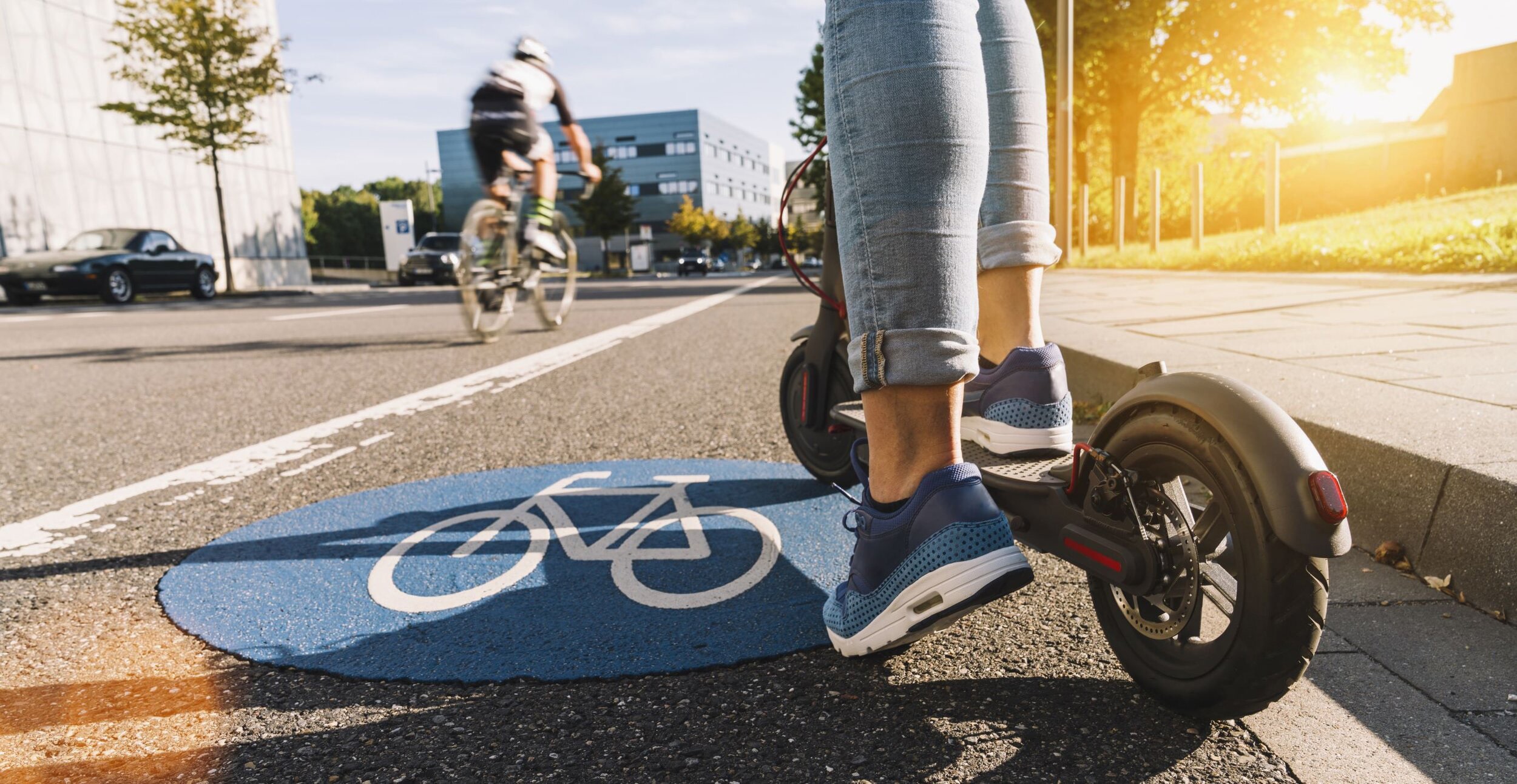What are the laws for driving e-scooters in Halifax?
Whether you’ve walked the Halifax waterfront this summer, or strolled down Spring Garden Road, you’ve likely seen an electric scooter pass by.
While the trend has been catching on in larger cities over the last few years, Halifax is just beginning to see electric scooters, or “e-scooters”, grow in popularity.
This form of transportation has proven to be popular because of its low cost, easy accessibility, and effortless means of commuting around the city. These benefits have been widely discussed since e-scooters have become more common place around the world.
But, it’s not all fun and games. The use of e-scooters, while a fun and helpful means of transportation, can also result in injuries to yourself or others. It is crucial to understand the rules around e-scooter use and things to look out for.
What are the law for e-scooters in Nova Scotia?
Like any other rider activity, as per Section 170B(1) of the Motor Vehicle Act, you have to wear a helmet when driving a scooter. You may think it’s okay to skip this step, however, failure to do so can lead to you not only receiving a fine, but can also result in serious, preventable injuries.
Additionally, you should never operate an e-scooter while under the influence of drugs or alcohol or operate an e-scooter in a reckless manner. Not only is it dangerous for you and those around you, but it could also lead to you facing criminal charges.
Aside from these basic rules, there is a lot of uncertainty in the laws surrounding e-scooters and their use.
Clarifying the laws for e-scooters: The Motor Vehicle Act
The current legislation governing the use of all motor vehicles throughout Nova Scotia is the Motor Vehicle Act . While this piece of legislation does not expressly refer to e-scooters, it has been adopted for their use until updated legislation is available.
Acknowledging the need for an update, the Nova Scotia government has introduced the Traffic Safety Act, which is set to replace the current Motor Vehicle Act. The Province is in the process of drafting these new regulations, intended to supplement and add clarity to the current rules and make the province’s roads and highways safer for everyone.
The Nova Scotia Government recently ended a public consultation period for the Drivers Regulations portion of the Traffic Safety Act on November 6th, 2020 in an attempt to incorporate the public’s feedback into the new rules. It has been stated that some of these regulatory changes will address new and upcoming transportation devices, including e-scooters.
A look at the draft regulations
One of the legislative changes appears to be the inclusion of ‘power-assisted bicycles’ within the new definitions. Given the new criteria that are listed in the draft regulations, it is very likely that e-scooters will be included, bringing them within the Traffic Safety Act’s jurisdiction.
Having just completed the feedback period for the draft regulations for vehicles, the next set of draft regulations to be publicly released include use of the road. While there does not appear to be a set date on when these will be released to the public, once they are they should further clarify the e-scooter rules, giving more insight into how citizens of Halifax will be able to operate e-scooters throughout the city.
Updates on the consultation process and the draft regulations can be viewed here.
While it appears that e-scooters will be incorporated within the new legislation, the Traffic Safety Act is still in draft form and thus is not yet effective. As such, you must operate e-scooters with extra caution until the laws are formalized.
What happens if I am injured by someone driving a motorized scooter or bicycle?
That’s where things can become more complicated. As you can probably imagine, e-scooters do not require automobile insurance like your standard vehicle would. This means that standard automobile insurance is not likely available as an area for compensation if you are struck by someone driving an e-scooter or motorized bicycle.
In most motor vehicle accidents, when a lawsuit is pursued, it is the Defendant’s automobile insurance that provides compensation for the injured party. However, because e-scooters do not currently require insurance while using them, this avenue for compensation is no longer available.
While you can still pursue a lawsuit against the responsible party, you are now limited in your avenues for compensation. While this may not be an issue for smaller claims, as injuries become more severe, damage awards rise. As the damage award increases, it will become increasingly difficult for a responsible party to pay compensation without the aid of insurance.
In these cases, there is one remaining avenue that may be pursued. Most homeowner insurance includes liability coverage against bodily injury or property damage caused by the insured, or sometimes, their family members. If you are struck by an e-scooter driver, it is important to determine whether they have homeowners insurance. If they do, and it includes liability coverage, this can go a long way to ensure that you are rightfully compensated for your injuries.
Safety tips for driving e-scooters
The following safety tips can help minimize your risk of an e-scooter accident and help you travel safely throughout Halifax.
Stay on the right side of the road (or sidewalk)
Just as you would with cars, bikes, and other transportation devices, you must stay on the right side of the road, following the flow of traffic when driving an e-scooter. Doing so will help minimize the potential for an accident to occur and is required for bicycles under Section 171(4) of the Motor Vehicle Act. Until the new regulations address the use of e-scooters on the sidewalks, pedestrians have the right of way on sidewalks, so stay to the right and do not hog the entire sidewalk as it can negatively affect those sharing the sidewalk with you. You must also go a reasonable rate of speed while on the sidewalk to match the flow of traffic and be able to anticipate any sudden movements by pedestrians.
No distracted scooting
Just as you wouldn’t text while riding a bike or driving a car, do not do so while operating your e-scooter. Texting while scooting could lead to you bumping into someone on the sidewalk, hitting a parked car, or colliding with a moving vehicle, all of which could end with a serious injury given the lack of protection you have on an e-scooter. Not only is there potential for injury, operating a cell phone while on a vehicle or personal transporter is seen as an offence under Section 100D(1) of the Motor Vehicle Act.
Follow typical rules of the road
Habits like looking both ways before crossing a street or ensuring you are looking ahead of you while operating your e-scooter are time-tested methods to ensure you arrive at your destination safely. Until further clarity is provided, following standard traffic rules will help you avoid potential accidents or injury. Always drive with due care, attention, and reasonable consideration for traffic or pedestrians in your path.
Request a
Free Consultation
If you would like to learn your legal options at no obligation, contact us today to set up a free consultation.

